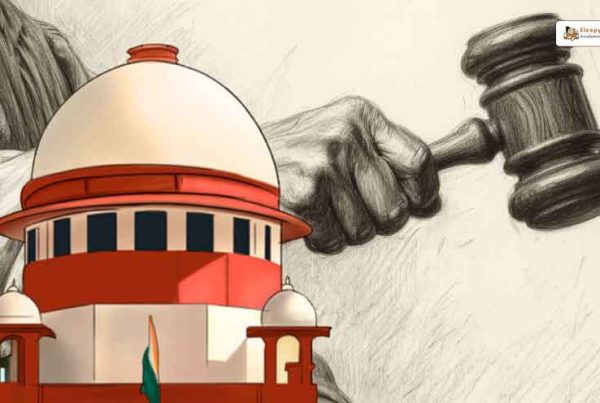Public Interest Litigation (PIL) is a powerful legal tool in India that helps promote social justice. It allows individuals or groups to seek justice on behalf of those who cannot represent themselves, especially the marginalized and disadvantaged. This article explores the concept, evolution, and significance of PIL in India, highlighting its role in ensuring accountability and addressing societal issues.
Key Takeaways
- PIL allows citizens to fight for the rights of others, especially those who can’t afford legal help.
- It has a rich history in India, starting from the 1980s, and has led to many important court decisions.
- PIL has empowered communities by addressing issues like environment and human rights.
- While beneficial, PIL also faces challenges like misuse and the burden it adds to the court system.
- The future of PIL in India includes new trends and the use of technology to enhance its effectiveness.
Understanding Public Interest Litigation in India
Definition and Concept
Public Interest Litigation (PIL) is a legal tool that allows individuals or groups to file petitions in the interest of the public. This mechanism aims to ensure that justice is accessible to everyone, especially those who cannot afford legal representation. In India, any citizen with a sufficient interest can approach the court to enforce the rights of others.
Historical Background
The concept of PIL gained traction in India during the 1980s, largely due to the Supreme Court’s efforts to protect the fundamental rights of the people. The first notable case was Hussainara Khatoon v. State of Bihar, which highlighted the plight of undertrial prisoners. This case marked a significant shift in the judiciary’s role, making it more proactive in addressing social issues.
Legal Framework
PIL is not defined in any specific statute but has been interpreted by the judiciary to reflect the public’s interest. The Supreme Court has emphasized that PILs can be filed for the enforcement of rights when individuals are unable to seek justice due to poverty or ignorance. The legal framework surrounding PILs aims to promote access to justice and accountability among authorities.
Public Interest Litigation serves as a bridge for the marginalized to access justice, ensuring that their voices are heard in the legal system.
Key Highlights
- Access to Justice: PIL enhances access for marginalized communities.
- Judicial Activism: Encourages courts to take proactive measures.
- Social Reform: Plays a crucial role in challenging outdated laws and practices.
Summary
In summary, Public Interest Litigation is a vital tool for promoting social justice in India. It empowers citizens to seek justice on behalf of others, ensuring that the legal system is accessible to all, regardless of their socio-economic status. The evolution of PIL reflects the judiciary’s commitment to uphold the rights of the underprivileged and foster a more equitable society.
The Evolution of Public Interest Litigation in India
Early Cases and Milestones
Public Interest Litigation (PIL) began in India in the early 1980s. It was introduced to help those who could not afford legal representation. The Supreme Court aimed to bring justice to the marginalized. Early cases, like People’s Union for Democratic Rights v. Union of India, set important precedents. These cases showed that the courts could help the poor and disadvantaged.
Role of the Judiciary
The judiciary played a crucial role in the growth of PIL. Judges like Justice V.R. Krishna Iyer and Justice P.N. Bhagwati were pioneers in this movement. They relaxed the traditional rule of locus standi, which meant that only those directly affected could file cases. This change allowed anyone with a genuine concern to approach the court.
Impact on Legal System
PIL has significantly impacted the Indian legal system. It has:
- Increased access to justice for the underprivileged.
- Encouraged judicial activism, where courts take a proactive role in protecting rights.
- Led to landmark judgments that address social issues, such as environmental protection and human rights.
The original promise of the PIL from the 1980s, based on social justice, has devolved into a confused and intimidating jurisprudence.
Overall, the evolution of PIL in India reflects a commitment to social justice and the empowerment of the marginalized.
Significant Public Interest Litigation Cases in India
Indra Sawhney v. Union of India
The Indra Sawhney case, also known as the Mandal verdict, is a landmark decision by the Supreme Court of India. It upheld the reservation for Other Backward Classes (OBCs) in government jobs but stated that reservations should not exceed 50%. This case highlighted the need for balancing social justice with the principle of equality.
Hussainara Khatoon v. State of Bihar
This case was the first reported instance of Public Interest Litigation in India. It focused on the inhumane conditions faced by prisoners and undertrial prisoners. The Supreme Court’s ruling emphasized the importance of human rights and led to significant reforms in the prison system.
Vishaka v. State of Rajasthan
The Vishaka case addressed the issue of sexual harassment in the workplace. The Supreme Court established the Vishaka Guidelines, which provided a framework for preventing sexual harassment and ensuring a safe working environment for women. This case was crucial in promoting gender equality in India.
Summary of Key Cases
| Case Name | Year | Key Issue | Outcome |
|---|---|---|---|
| Indra Sawhney v. Union of India | 1992 | Reservation for OBCs | Upheld with a cap of 50% |
| Hussainara Khatoon v. State of Bihar | 1979 | Conditions of prisoners | Reforms in prison conditions |
| Vishaka v. State of Rajasthan | 1997 | Sexual harassment in the workplace | Established Vishaka Guidelines |
Public Interest Litigation has played a vital role in addressing significant social issues in India. It has empowered marginalized communities and ensured that their voices are heard in the legal system. PIL serves as a powerful tool for social justice, making it essential for the ongoing fight for equality and human rights in the country.
Role of Public Interest Litigation in Social Justice
Empowering Marginalized Communities
Public Interest Litigation (PIL) plays a crucial role in empowering marginalized communities in India. It allows individuals and groups to seek justice on behalf of those who cannot represent themselves. The Supreme Court of India has said that public interest litigation is an effective tool for protecting the rights of the disadvantaged, especially women. This means that PIL can help bring attention to issues that affect the most vulnerable in society.
Addressing Environmental Issues
PIL has also been instrumental in addressing environmental issues. Many cases have been filed to protect natural resources and ensure sustainable development. For example, PILs have led to stricter regulations on pollution and the protection of wildlife. This shows how PIL can be a powerful tool for environmental justice.
Promoting Human Rights
Another significant aspect of PIL is its role in promoting human rights. It has been used to challenge laws and practices that violate fundamental rights. Through PIL, citizens can hold the government accountable for its actions and ensure that everyone’s rights are respected.
Public Interest Litigation serves as a bridge between the law and the common people, ensuring that justice is accessible to all.
Summary of Key Roles of PIL in Social Justice
- Empowers marginalized communities by giving them a voice.
- Addresses environmental issues through legal action.
- Promotes human rights by challenging unjust laws.
In conclusion, Public Interest Litigation is a vital mechanism for achieving social justice in India, making it an essential tool for change.
Challenges and Criticisms of Public Interest Litigation
Judicial Overreach
Public Interest Litigation (PIL) has sometimes led to judicial overreach, where courts may step into areas traditionally managed by the executive or legislative branches. This can create tension between different branches of government and blur the lines of accountability.
Frivolous Petitions
Another significant issue is the rise of frivolous petitions. Some individuals misuse PILs to address personal grievances rather than genuine public concerns. This misuse can waste valuable court time and resources, leading to delays in addressing serious issues.
Implementation Issues
Even when PILs succeed in court, the implementation of judgments can be problematic. Many times, the orders given by the courts are not effectively enforced, leaving the intended beneficiaries without the relief they sought.
Summary of Concerns
Here’s a quick overview of the main challenges associated with PIL:
- Judicial Overreach: Courts stepping beyond their role.
- Frivolous Petitions: Personal issues disguised as public interest.
- Implementation Issues: Difficulty in enforcing court orders.
Public Interest Litigation is a powerful tool, but it must be used responsibly to ensure it serves the public good rather than personal agendas.
While PILs have played a crucial role in promoting social justice, addressing these challenges is essential for their continued effectiveness. Public interest litigation must remain a tool for the people, not a means for personal gain.
Public Interest Litigation and Judicial Activism
Definition of Judicial Activism
Judicial activism refers to the active role played by the judiciary in interpreting laws and ensuring justice, especially in cases that affect the public interest. This approach allows the courts to step in when other branches of government fail to protect citizens’ rights.
Landmark Judgments
Several landmark judgments in India have showcased judicial activism through Public Interest Litigation (PIL). Some notable cases include:
- Hussainara Khatoon v. State of Bihar: This case highlighted the plight of undertrial prisoners and emphasized the right to a speedy trial.
- Vishaka v. State of Rajasthan: This case established guidelines for preventing sexual harassment at the workplace, showcasing the judiciary’s proactive stance on women’s rights.
- Indra Sawhney v. Union of India: This case addressed the issue of reservations for Other Backward Classes (OBCs) in government jobs, reinforcing the need for social justice.
Critiques of Judicial Activism
While judicial activism has its merits, it also faces criticism. Some common critiques include:
- Judicial Overreach: Critics argue that courts sometimes overstep their boundaries, encroaching on the powers of the legislature.
- Frivolous Petitions: The rise of PILs has led to concerns about frivolous petitions clogging the judicial system.
- Implementation Issues: Even when courts issue progressive rulings, the implementation often falls short, leaving many without the justice they seek.
“The growth of public interest litigation in India has transformed the judicial landscape, empowering the Supreme Court to address pressing social issues.”
In conclusion, while Public Interest Litigation serves as a vital tool for social justice, it also raises important questions about the balance of power among the branches of government. The role of the judiciary in this context is crucial, as it strives to uphold the rights of the marginalized while navigating the complexities of judicial activism.
Public Interest Litigation in the Context of COVID-19
Increased Filings During the Pandemic
The COVID-19 pandemic led to a significant rise in Public Interest Litigations (PILs) in India. Citizens and organizations sought judicial intervention on various issues, including health care, safety, and social justice. This surge highlighted the urgent need for legal action to protect public interests.
Key Issues Addressed
During the pandemic, PILs addressed several critical issues:
- Access to healthcare and medical facilities
- Protection of workers’ rights, especially in informal sectors
- Ensuring food security for vulnerable populations
Judicial Responses
The judiciary played a crucial role in responding to these PILs. For instance, the Supreme Court dismissed a PIL alleging side effects of COVID-19 vaccines, stating it was an attempt to create sensation. The court emphasized the importance of factual accuracy in public health matters.
The judiciary’s proactive stance during the pandemic has reinforced the significance of PILs in safeguarding public welfare.
In summary, the COVID-19 pandemic has underscored the vital role of Public Interest Litigation in addressing urgent social issues and ensuring government accountability.
Comparative Analysis: Public Interest Litigation in India and Other Countries
United States
In the United States, Public Interest Litigation (PIL) has a strong history rooted in civil rights movements. The concept emphasizes the role of the judiciary in protecting the rights of marginalized groups. Key features include:
- Class Action Lawsuits: These allow a group of people with similar grievances to sue as a collective.
- Legal Aid Organizations: Many non-profits provide legal representation to those who cannot afford it.
- Judicial Activism: Courts often take proactive roles in addressing social issues.
United Kingdom
In the UK, PIL is less formalized but still significant. The focus is on:
- Judicial Review: Citizens can challenge the legality of government actions.
- Public Law: This area of law allows individuals to seek remedies for public wrongs.
- Access to Justice: There are various mechanisms to ensure that the public can seek legal help without financial barriers.
South Africa
South Africa’s approach to PIL is influenced by its history of apartheid. Key aspects include:
- Constitutional Rights: The Constitution provides strong protections for human rights, allowing for PIL to address injustices.
- Public Interest Cases: Courts have ruled on cases that affect large groups, such as land reform and access to healthcare.
- Community Involvement: Many cases are brought forward by community organizations advocating for the rights of the disadvantaged.
| Country | Key Features of PIL |
|---|---|
| United States | Class Action Lawsuits, Legal Aid Organizations, Judicial Activism |
| United Kingdom | Judicial Review, Public Law, Access to Justice |
| South Africa | Constitutional Rights, Public Interest Cases, Community Involvement |
The effectiveness of PIL varies across countries, but its core aim remains the same: to ensure justice for all, especially the marginalized.
This comparative analysis highlights how different nations adapt the concept of PIL to their unique legal and social contexts, ensuring that the pursuit of justice remains a global endeavor.
Future of Public Interest Litigation in India
Emerging Trends
Public Interest Litigation (PIL) is evolving in India, adapting to new challenges and societal needs. The future of PIL looks promising as it continues to empower citizens and promote social justice. Some emerging trends include:
- Increased focus on environmental issues.
- Greater involvement of technology in filing and managing cases.
- Enhanced collaboration between NGOs and legal professionals.
Potential Reforms
To strengthen PIL, several reforms can be considered:
- Establishing clear guidelines for filing PILs to prevent misuse.
- Enhancing transparency by requiring detailed disclosures from petitioners.
- Implementing penalties for frivolous petitions to maintain judicial efficiency.
Role of Technology
Technology is set to play a crucial role in the future of PIL. It can:
- Facilitate easier access to legal resources for marginalized communities.
- Streamline the filing process through online platforms.
- Use data analytics to identify pressing public issues that need legal intervention.
The evolution of PIL reflects a growing commitment to social justice, ensuring that the voices of the marginalized are heard and addressed.
In conclusion, the future of Public Interest Litigation in India is bright, with the potential for significant reforms and advancements that can enhance its effectiveness in promoting social justice and accountability.
Public Interest Litigation and Government Accountability
Holding Authorities Accountable
Public Interest Litigation (PIL) plays a crucial role in ensuring that government bodies act responsibly. It empowers citizens to challenge government actions that may violate public interest. Through PIL, individuals can seek justice for issues affecting the community, such as environmental degradation or human rights violations.
Transparency and Governance
PIL promotes transparency in government operations. By allowing citizens to question decisions made by authorities, it encourages a culture of accountability. This is essential for a healthy democracy, as it ensures that public officials are answerable to the people they serve.
Case Studies
Here are some notable examples of how PIL has enhanced government accountability:
- Hussainara Khatoon v. State of Bihar: This case highlighted the plight of undertrial prisoners and led to reforms in the judicial system.
- Vishaka v. State of Rajasthan: This case established guidelines for preventing sexual harassment at the workplace, holding authorities accountable for ensuring a safe environment.
- Indra Sawhney v. Union of India: This landmark case addressed the issue of reservations in government jobs, ensuring fair representation.
Public Interest Litigation serves as a vital mechanism for protecting the rights of all citizens, particularly the vulnerable and marginalized sections of society.
In summary, PIL is not just a legal tool; it is a powerful means for citizens to hold their government accountable and ensure that justice is served. By promoting transparency and addressing public grievances, PIL strengthens the foundations of democracy in India.
Public Interest Litigation and Legal Aid
Access to Justice
Public Interest Litigation (PIL) plays a crucial role in ensuring that everyone, especially the disadvantaged, can access justice. It helps bridge the gap between the rich and the poor in legal matters. Many people cannot afford legal fees, making it hard for them to seek help. PIL allows individuals or groups to file cases on behalf of those who cannot do so themselves.
Role of NGOs and Civil Society
Non-Governmental Organizations (NGOs) and civil society groups are vital in promoting legal aid. They often:
- Provide free legal services to those in need.
- Raise awareness about legal rights and available resources.
- Assist in filing PILs to address social issues.
Legal Aid Mechanisms
The Indian government has established various legal aid mechanisms to support those who cannot afford legal representation. Some key features include:
- Free legal services for eligible individuals.
- Legal literacy programs to educate the public about their rights.
- Online services and free legal aid schemes are also available, ensuring that help is accessible to all.
Legal aid is not just about providing lawyers; it’s about ensuring that justice is available to everyone, regardless of their financial status.
PIL and legal aid work hand in hand to promote social justice in India. They empower marginalized communities and ensure that everyone has a voice in the legal system. By addressing the barriers to justice, they help create a more equitable society.
Public Interest Litigation (PIL) and legal aid play a crucial role in ensuring that everyone has access to justice. These tools help individuals who may not have the means to fight for their rights in court. If you want to learn more about how you can get involved or seek help, visit our website today!
Conclusion
In summary, Public Interest Litigation (PIL) serves as a vital tool for promoting social justice in India. It allows ordinary citizens to seek justice for those who cannot do so themselves, especially the underprivileged. By making the legal system more accessible, PIL helps ensure that everyone, regardless of their background, can have their rights protected. This process not only addresses individual grievances but also highlights broader social issues, encouraging reforms that benefit society as a whole. As we move forward, it is essential to continue supporting and refining PIL to ensure it remains effective in achieving justice for all.
Frequently Asked Questions
What is Public Interest Litigation (PIL)?
Public Interest Litigation (PIL) is a legal action taken in court for the benefit of the public or a specific group. It allows individuals or organizations to seek justice for issues that affect the community as a whole.
How did PIL start in India?
PIL began in India in the 1980s when the Supreme Court started to play a more active role in protecting the rights of citizens, especially the poor and marginalized.
What are some famous PIL cases in India?
Some well-known PIL cases include Hussainara Khatoon v. State of Bihar, which focused on the rights of undertrial prisoners, and Vishaka v. State of Rajasthan, which dealt with women’s rights.
Who can file a PIL?
Any person or organization that has a genuine interest in a public issue can file a PIL. You don’t have to be directly affected by the issue.
What are the benefits of PIL?
PIL helps bring attention to important social issues, gives a voice to the marginalized, and promotes justice and accountability in government actions.
Are there any challenges with PIL?
Yes, challenges include frivolous cases, judicial overload, and sometimes misuse of PIL for personal agendas.
How does PIL promote social justice?
PIL promotes social justice by providing a platform for the disadvantaged to seek legal remedies, ensuring their rights are protected and upheld.
What role does the judiciary play in PIL?
The judiciary plays a crucial role in PIL by interpreting laws, ensuring justice is served, and sometimes taking proactive measures to address public issues.




